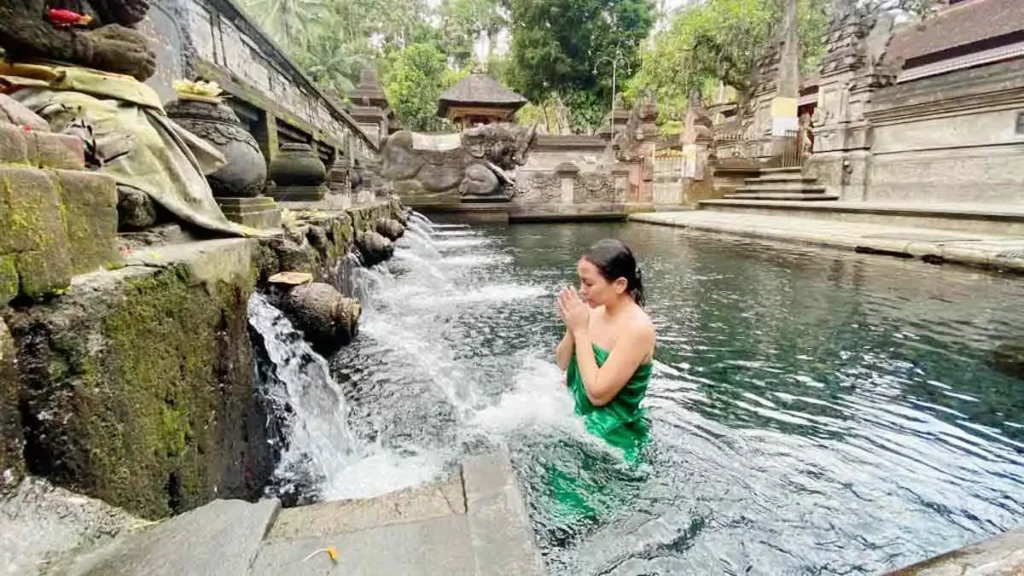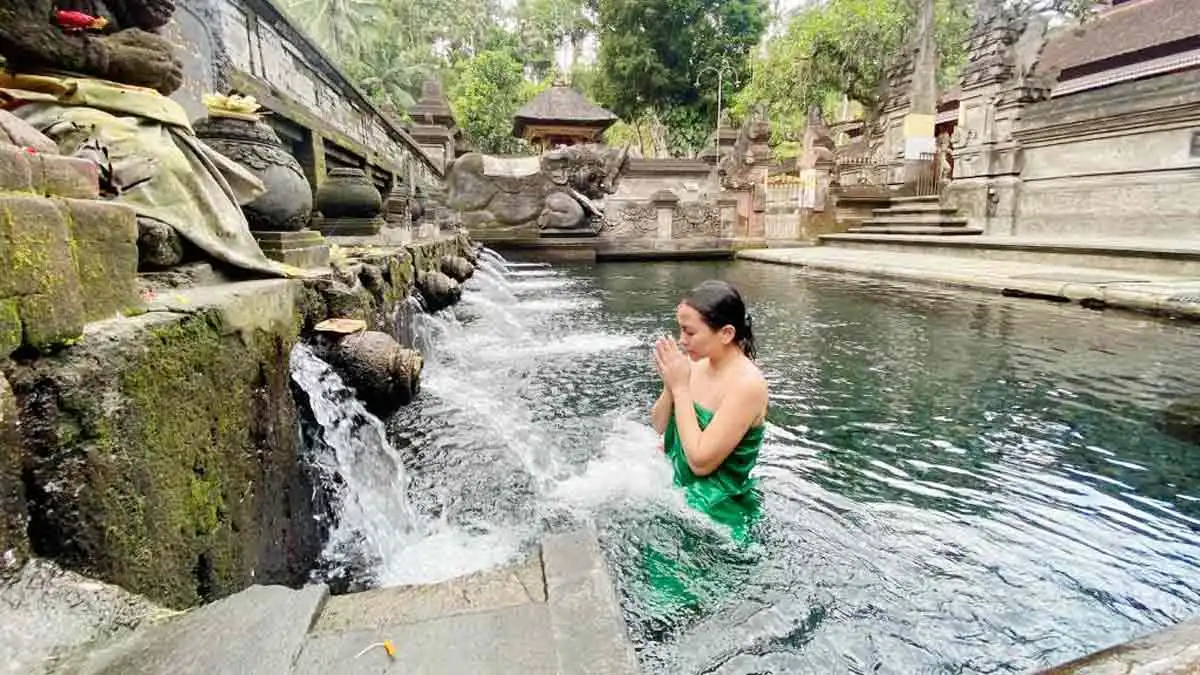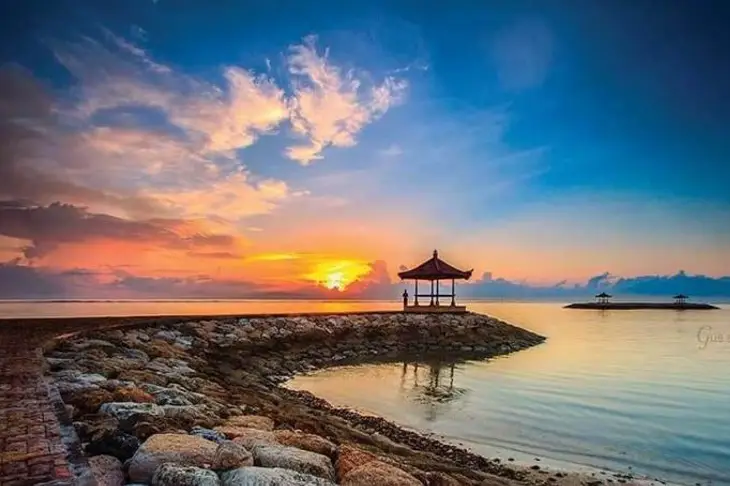Bali has always been more than just a tropical paradise. Beyond the golden beaches, terraced rice fields, and ornate temples lies a spiritual rhythm that flows through the island like a heartbeat. For centuries, Balinese people have believed in the balance between the seen and unseen worlds a harmony that must be constantly nurtured. And among their most sacred practices stands Melukat, the Balinese water purification ritual a ceremony not just for the body, but for the soul.
For travelers seeking a deeper connection to Bali beyond sightseeing, experiencing Melukat in Bali is a transformative journey. It’s an act of spiritual cleansing washing away negative energy, confusion, and fatigue from the mind and spirit. In recent years, more visitors have discovered that this ancient ritual isn’t a tourist gimmick, but an authentic path to inner calm that welcomes anyone who approaches it with respect and sincerity.
A Traveler’s First Melukat Experience
It often begins with curiosity. For one traveler, standing barefoot on cool temple stones in the morning mist of Tirta Empul Temple, the air felt charged with serenity. Dressed in a simple sarong and sash, she joined the locals lining up at the holy springs. The priest’s chant echoed softly as sunlight filtered through the banyan trees. When the first splash of cold, sacred water touched her head, it felt like a quiet rebirth a pause from the noise of the outside world.
This is the essence of Melukat Bali to purify, to let go, and to start anew. Every temple offers a different rhythm of the same song: one that speaks of balance, forgiveness, and renewal.
The Meaning and Philosophy of Melukat
In Balinese culture, Melukat means “to cleanse.” It’s derived from the old Javanese word lukat, which means to purify or free oneself from impurities not just physical, but spiritual. Balinese Hindus believe that human beings carry not only physical dirt but also emotional and energetic burdens that accumulate from life’s challenges. Through Melukat, these negative energies are washed away by sacred water (tirta), restoring harmony between body (raga), mind (manah), and soul (atma).
The ritual is often performed before major life events such as marriage, Nyepi (the Day of Silence), or after periods of personal struggle. Yet today, many people, including visitors from around the world, come to participate simply to feel peace and clarity.
The Process: How the Melukat Ritual Is Performed
Every temple in Bali conducts Melukat slightly differently, but the steps often share the same structure:
- Preparation and Offering
Before entering the holy springs, worshippers prepare canang sari small floral offerings with incense and rice, symbolizing gratitude and balance. - Purification of Mind and Body
Participants change into a sarong and selendang (sash), covering their lower body out of respect. Then, guided by a local priest or temple caretaker, they enter the holy pools. - The Water Blessing
There are usually several fountains, each representing different aspects of cleansing. Visitors move from one spout to the next washing the face three times, rinsing the head, and letting the water pour over the body while praying or reflecting silently. - Prayer and Reflection
After the ritual, worshippers return to the temple courtyard to pray with offerings. The moment is deeply personal it’s not about religion, but about returning to a state of balance and gratitude.
Best Places to Experience Melukat in Bali
1. Tirta Empul Temple (Tampaksiring)
The most famous Melukat Bali site, Tirta Empul is over a thousand years old and believed to be blessed by the god Indra. Its 30 holy fountains are fed by a natural spring that never dries, even during droughts. The water is said to heal emotional wounds and restore harmony. It’s ideal for first-timers, with guides available to assist respectfully through the process.
2. Pura Mengening (Sebatu Village)
Often described as Tirta Empul’s quieter twin, Pura Mengening is nestled deep in nature and surrounded by jungle streams. The name “Mengening” means “to become still.” The setting encourages introspection the sound of running water and birds replaces crowds, making it a favorite for those seeking solitude during their Melukat in Bali.
3. Pura Tirta Sudamala (Bangli)
Hidden in a serene valley, Tirta Sudamala offers powerful energy. The water comes directly from the mountains, icy cold and believed to remove deep-seated negativity. It’s less touristy and often visited by locals during full moon ceremonies.
4. Pura Gunung Kawi Sebatu
Located near rice terraces and koi-filled ponds, this temple is famous for its tranquil atmosphere. The water here symbolizes fertility and prosperity. After the ritual, you can relax by the temple gardens, where lotus flowers bloom under the morning sun.
5. Tibumana Waterfall – A Natural Alternative
For those looking for a modern take on Melukat Bali, some choose to perform a personal cleansing ritual beneath the cascading Tibumana Waterfall near Bangli. While not an official temple ceremony, the atmosphere feels equally spiritual a reminder that sacredness in Bali isn’t confined to walls of stone.
What to Prepare Before Doing Melukat
To join a Melukat ritual in Bali, you don’t need to be Hindu only sincere and respectful. Here’s what to prepare:
- Sarong and Sash: Required attire for entering temples (available for rent or purchase near entrances).
- Offerings: Locals can help prepare small offerings (canang) for prayers.
- Change of Clothes: You’ll get fully wet during the ritual.
- Local Guide or Priest: Recommended for first-timers to understand the meaning behind each step.
- An Open Heart: The most important part approach with humility and gratitude.
Cultural Etiquette: Showing Respect During Melukat
- Always dress modestly cover shoulders and knees.
- Avoid entering during menstruation, as temples are considered sacred spaces.
- Do not take selfies during the ritual. Photography should be discreet and respectful.
- Follow the local priest’s guidance Melukat is a living tradition, not a performance.
The Deeper Meaning: Cleansing Mind, Body, and Spirit
After the ritual, most participants describe a sense of lightness as though the island itself has whispered forgiveness. For Balinese people, water (tirta) is not just liquid; it’s the physical form of divine energy that flows through every living being.
In that moment, surrounded by incense smoke and the sound of flowing springs, it’s easy to understand why Bali feels sacred. Melukat Bali isn’t about religion alone; it’s about remembering your place in the balance of life an inner cleansing that connects you to something greater than yourself.
FAQ – Everything You Need to Know About Melukat Bali
Yes. As long as you participate respectfully and follow temple guidelines, everyone is welcome to experience Melukat in Bali.
You can bring your own, but most temples provide ready-made offerings for a small donation.
A sarong and sash are mandatory. Avoid swimwear or revealing clothes. Modesty is essential inside temple grounds.
Not exactly. Melukat focuses on cleansing through water, while blessings may include prayer rituals without immersion.
Early morning before 10 AM is ideal, when the water is cool, the air calm, and the temples quiet.
A Journey of Inner Renewal
Experiencing Melukat in Bali is not just a cultural ritual it’s an invitation to slow down and reconnect. Beneath the temple’s calm water, you leave behind what no longer serves you and emerge renewed, lighter, and more attuned to life’s sacred flow.
For many travelers, it becomes the most meaningful memory of their trip proof that Bali’s magic lies not only in its beauty, but in its spirit. And after your Melukat journey, take a quiet moment to reflect perhaps over a cup of rich Arabic coffee in Ubud, where the aroma of roasted beans mingles with incense and the soft hum of morning prayers. In Bali, even coffee feels sacred. Also read our article about Foodie’s Guide Where to Find the Best Breakfast in Ubud










2 Responses
https://shorturl.fm/4LEwP
https://shorturl.fm/h7UjR